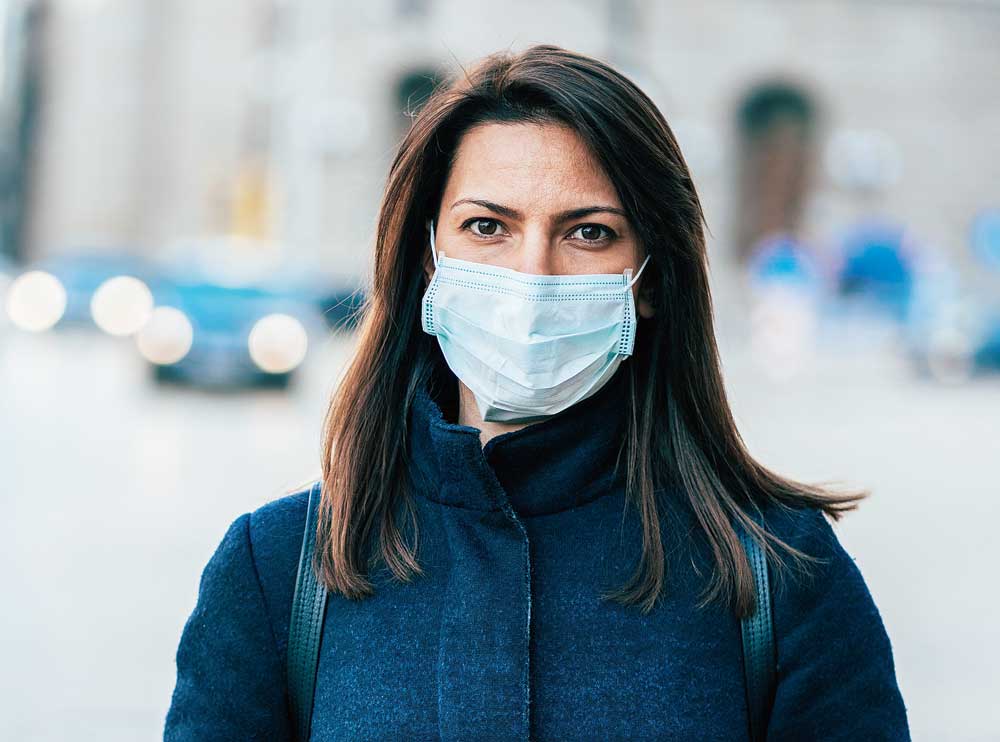As the novel coronavirus (COVID-19) continues to infect people around the world, advice to fight the outbreak is available a dime a dozen. The bogus claims, conspiracy theories and rumours floating around are more menacing than the virus itself. To better understand what’s happening and cut through the confusion, it is best to trawl through authentic sources, such as the advisories of World Health Organization (WHO). And here are the results.
Myth: Must wear a mask
Fact: WHO’s advice is unequivocal, “Only wear a mask if you are ill with COVID-19 symptoms (especially coughing) or are looking after someone who may have COVID-19. A disposable face mask can only be used once. If you are not ill or looking after someone who is ill then you are wasting a mask.”
There is a worldwide shortage of masks, so WHO has urged people to use masks wisely. The US Centers for Diseases Control (CDC) also does not recommend that healthy people wear a mask to protect themselves from respiratory diseases, including COVID-19. Disposable surgical masks are not recommended for people not exhibiting any symptoms of respiratory illness as these don’t fit well on the nose and may allow tiny infected droplets to get into the nose, mouth or eyes. Also, if you touch an infected surface and then your face under the mask, you can get infected.
Only certain masks, such as the professional, tight-fitting respirator, N95, can protect healthcare workers as they care for infected patients. However, Hong Kong’s health authority says that N95 respirators are not recommended for use by the general public. It provides protection only if worn properly and wearing and removing it correctly requires special training.
Myth: Avoid all things Chinese
Fact: Several social media posts claim that goods and packages from China may contain the virus. WHO has condemned this saying, “Even though the new coronavirus can stay on surfaces for a few hours or up to several days (depending on the type of surface), it is very unlikely that the virus will persist on a surface after it has travelled and been exposed to different conditions and temperatures.”
For a virus to remain viable, it needs a combination of specific environmental conditions such as a particular temperature, humidity and no UV exposure — which you don’t get in shipping packages, say researchers at the Johns Hopkins Center for Health Security in the US.
Myth: Some home remedies can cure or prevent the virus
Fact: Garlic, Vitamin C, hot water, homoeopathic medicines and cow urine cannot prevent or cure COVID-19 although they are being touted as a remedies on social media. Says the WHO advisory, “Garlic is a healthy food that may have some antimicrobial properties. However, there is no evidence from the current outbreak that eating garlic has protected people from the new coronavirus.” There’s currently no cure for the novel coronavirus. And while research is underway, it could be more than a year before a vaccine becomes available.
Myth: The virus is lab-made
Fact: One version of the conspiracy theory spread widely across the Internet is that a Chinese lab had been working secretly on a bioweapon that got leaked. Another version that was all over the nationalist Chinese social media is that the virus originated in the US and the huge toll of seasonal flu in the US this year was actually due to COVID-19. Scientists in both the countries have strongly debunked the theories.
Current research indicates that COVID-19 has close resemblance to two other coronaviruses that triggered outbreaks in recent decades, SARS and MERS. It most likely originated in some animal (such as bat) and was transmitted to an intermediate host (such as pig) before jumping to humans.
Myth: Getting the virus is a death sentence
Fact: According to a study published in Chinese Center for Disease Control and Prevention, about 81 per cent of people who are infected with the coronavirus have mild cases of COVID-19. About 13.8 per cent report severe illness, meaning they have acute shortness of breath, or require supplemental oxygen, and about 4.7 per cent are critical, meaning they face respiratory failure, multi-organ failure or septic shock.
The data thus far suggests that only around 2.3 per cent of people infected with COVID-19 die from the virus. In other words, people who get the virus will typically get sick with a mild to moderate upper respiratory tract illness, similar to a common cold. In a majority of cases, the symptoms will go away on their own.
The disease can be fatal in very rare cases. Older people with underlying health conditions seem to be most at risk of having a severe form of the disease or complications. The bottom line is: don’t panic, but take basic steps of hygiene to prepare and protect yourself from the virus.










